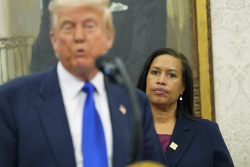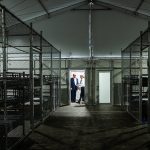Japan and South Korea are doubling down on defense technology as they adapt to demographic decline, regional threats, and an unreliable United States.
In Robert Kagan’s 2018 book, The Jungle Grows Back, there was a clear warning: the post-World War II (WWII) ‘Pax Americana’ that the world has experienced could diminish if the United States withdraws from its role as the worldwide ‘gardener’. He argues that the relative peace of the last 80 years is the exception, not the norm, and should be managed with great care. In 2022, four years after the book’s publication, Kagan’s foresight was tragically affirmed with Russia’s invasion of Ukraine. In 2023, the October 7 attack on Israel and ensuing war further demonstrated the prescience of Kagan’s book. The jungle is growing back, and the world is acting accordingly.
East Asia’s Defense Pivot
Nations like South Korea and Japan, in particular, face threats as a result of their geography; they are surrounded by China, North Korea, and Russia. Rather than entrusting their defense to an increasingly unreliable United States, Japan and South Korea have begun to invest heavily in a growing defense technology sector. Although they remain aligned with Washington, their new insurance policy also affords them greater control over foreign policy decision-making.
Japan’s Rearmament
Japan is the more surprising of the two. The country, given its WWII legacy, has chosen to remain largely pacifist over the last 80 years, capping defense spending at 1 percent of its GDP. The well-known Article 9 of the constitution prohibits Japan from using war as a means of resolving international disputes, and even forbids maintaining a military large enough to conduct a war. Nevertheless, recently, Japan has seen a massive shift towards rearmament. In 2022, a new target for defense spending was set at 2 percent of the country’s GDP, to be reached by 2027. The target of the investments matters too. The Ministry of Defense has created an entire dedicated defense tech incubator, with a primary purpose of investing in and developing software that has military applications. “The goal is to take a disruptive technology from initial contract to full development in three years.” Japan aims to develop an entire ecosystem of private-sector companies whose products are dual-use. By focusing on software rather than hardware, Japan achieves two goals. Firstly, a focus on defense tech allows them to circumvent the Constitution’s prohibition of a standing army capable of conducting war. Secondly, given the serious demographic issues that Japan faces, the country would be able to handle its own self-defense without relying on the United States or on an increasingly shrinking military age population.
South Korea’s Defense Technology Drive
Japan is not alone in East Asia, seeing its military-aged population decline. South Korea deals with the same issue by enforcing military conscription for all men aged 18-28. The comparative leniency of South Korea’s constitutional anti-aggression clause has allowed it to become a leading military hardware exporter and producer. In particular, it has become a major arms exporter to nations with an expanding military, including Poland, the Philippines, and Thailand, as well as already developed nations looking to improve their military infrastructure, including the United Kingdom, New Zealand, and Norway. Now, they are looking to compete on the world stage of defense technology. Despite implementing amandatory military conscription system, the manpower shortages and lack of human resources are explicitly labelled as a driver behind South Korea’s emphasis on autonomous systems. This is not just saber-rattling: the heavy investment in defense technology has produced results. A triennial report by the Korea Research Institute of Defense Technology Planning and Advancement ranks Korea’s defense technology as number eight in the world, tying Japan for a capacity equal to around 82 percent of that of the United States.
The importance of defense technology can not be overstated as we move into a world where war is characterized mainly by differences in technological capabilities, rather than differences in manpower. According to Seong Tae Jeong, a South Korean military technology expert, “a single line of software can neutralize hardware worth billions.” This, combined with the Chinese, North Korean, and Russian threats, the decreasing populations of South Korea and Japan, and the emerging unreliability of the United States, makes strategic investments in defense technology the only logical step for the future of each respective military.
An Unreliable United States
The United States plays a role here, too. The second Trump administration has quickly redefined the relationship between the United States and its allies. Even countries like India, whose relationship with Washington has been cultivated over multiple administrations, across party lines, have found themselves as a target. India’s geostrategic location, which allows it to play an important role in the West’s competition with China, was presumed to be a shield to Trump’s aggression. Despite this, Trump has hit them with some of the highest tariffs (50 percent), as he continues to antagonize them.
South Korea and Japan have taken note. They haven’t yet experienced major attacks from Trump, but they are coordinating regardless. Due to the lasting legacy of WWII, the two countries, although allied through their alignment with Washington, have had a strained relationship. But both recognize the need for improved relations as a result of an unreliable United States.
Historically, the first bilateral summit of any South Korean President has been with the United States. However, in breaking from tradition, South Korean President Lee Jae-myung held a summit with Japanese Prime Minister Ishiba just days before his visit to the United States. The United States was there too, in all but name: President Lee specifically mentioned that the two countries “face international turmoil due to trade issues and security matters, while holding similar ideological positions.” The two countries made clear their desire to reconcile, issuing their first joint statement in 17 years. Agreements included cooperation in the field of artificial intelligence, as well as increased cooperation in defense and the North Korean threat.
Interestingly, despite being one of the main expected topics for the South Korea-United States summit, defense was hardly mentioned between Trump and Lee in their Monday meeting. Instead, talks focused on flattery rather than substance.
About the Author: Savar Suri
Savar Suri is an Émile Boutmy Scholar at Sciences Po Paris. He has previously worked with the Anwar Gargash Diplomatic Academy in Abu Dhabi.
Image: chainarong06/shutterstock

















